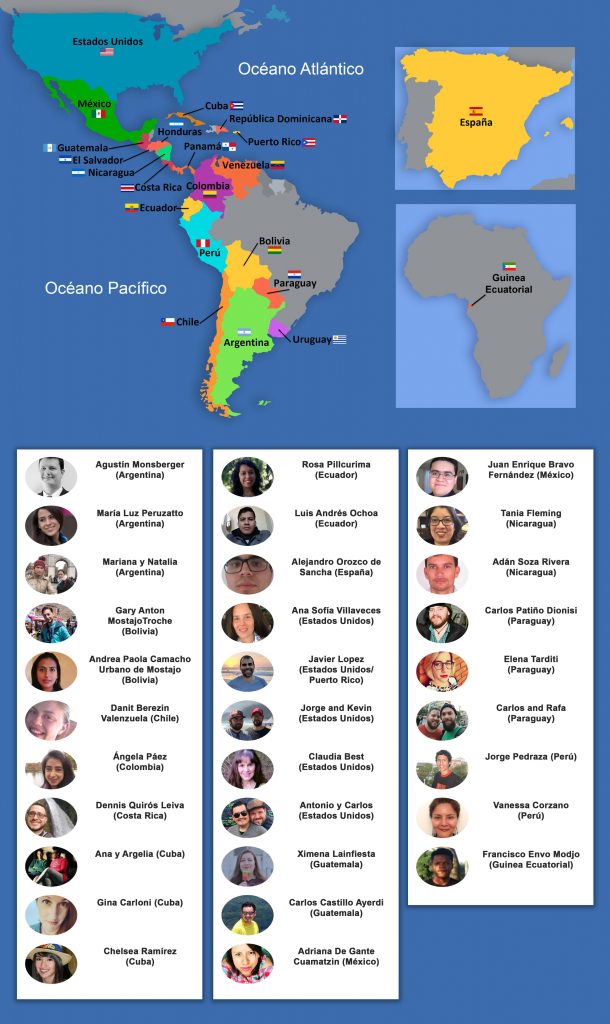Interpretive, Interpersonal, and Presentational Modes of Communication
Exploring Culture
At the end of each chapter in Contraseña, we learned how to research different Spanish topics and how to discuss different cultures in Spanish-speaking countries. In addition, learning about other people in Latin American culture allows students to admire characteristics they once would not have.

One aspect of Spanish-speaking countries that is unique is the fact that some countries have Siesta hours. Siesta is when people often return home mid-day to spend time with their families. They do this because of the extreme heat during peak hours while they work. Another significant aspect of Spanish-speaking countries is that most students live at home while attending college.
La mayoría de la gente en Guatemala trabaja de seis y media de la mañana a ocho de la noche.
La siesta es popular y es desde el mediodía hasta las tres de la tarde.
Si, porque muchos negocios están siendo comprados por extranjeros, la gente en Guatemala no van la siesta.
Engaging in Communities
Throughout the semester, classmates constantly worked together to complete various tasks. For example, we would partner up to complete different modules under the “conversar” tab. As a result of doing this in class, we were able to interact with each other in Spanish and speak it better. In addition, as a class, we were encouraged to speak Spanish with others on campus. During some of our projects, we got the opportunity to enact our Spanish-speaking skills in the community.
Interpersonal Communication
The online textbook provided activities requiring students to analyze and evaluate sentences and phrases or determine the correct conjugated endings. Profesora Vera regularly engaged us in 1-on-1 conversations in Spanish, which quickly allowed us to construct sentences. This would make me want to speak Spanish either in class or at home. We also made an interview-like video for our second project. Although the conjugation part was easy for me, I found it challenging to understand the meaning of the sentences. My mind could recognize individual words, but I needed help to combine them coherently. Understanding more quickly is possible by relying on context clues and verbs rather than focusing solely on literal translations.
Presentational Speaking
For our fourth project, we were instructed to create a video explaining different locations around campus. Our project allowed us to describe different buildings and the activities that take place in them. This project relates directly to our daily lives and teaches us how to prepare and deliver Spanish sentences for a Spanish audience, which is one of the most impactful for us.
Interpretive Listening
In some of the modules on Contraseña, we got to listen to activities and explain what was said or respond to what was said. This was done by either answering the question in writing or answering it by recording your voice. I found these to be easy because of the experience we gained during class. Also, these activities were fun because they were interactive and almost like brain games. My understanding of sentence structure improved as the semester progressed, and it became second nature to me.
Interpretive Reading
Throughout the semester, we were encouraged to conduct research on Spanish-speaking countries. One of the first exercises that stood out was about social media in Spanish-speaking countries. We had to research which countries used social media and which social media platform was most popular in those countries.
During this assignment, I researched Mexico and found that Facebook was the most popular social network based on a publicly conducted survey by statista.com. Facebook was also found to be the most popular social network on ilifebelt.com, while searching the same question in Spanish yielded different results. I began noticing inconsistencies when the English websites did not match up with their Spanish counterparts.
Red Social más popular en México es Facebook. Most popular social network in Mexico is Facebook. La red social más popular es Facebook. The most popular social network is Facebook. Porcentaje de usuarios de esa red es 73%. Percentace of users of that network is 73%. Otras redes sociales populares es Youtube, Snapchat, y Instagram. Other popular socal networks are Youtube, Snapchat, and Instagram. Otra información interesante es red social más popular es WhatsApp.